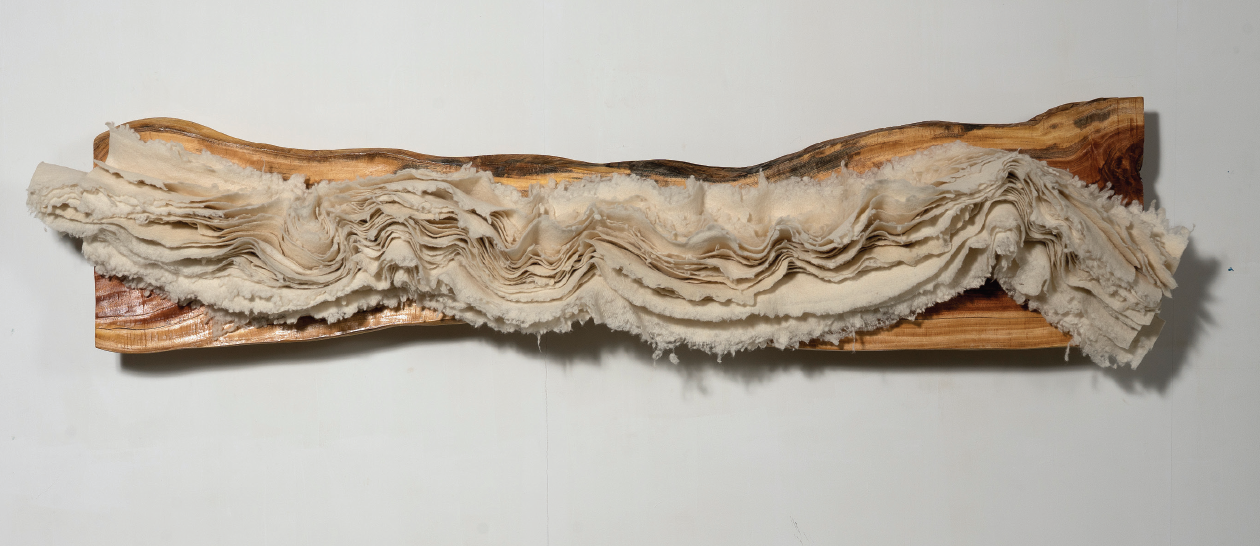Weaving the Essence of Nature
ANANYA PATEL profiles textile artist DARSHINI PATEL, exploring her meditative weaving process and the nature-inspired textiles she creates.
Darshini Patel describes her entire process as a textile artist, especially her work with a loom, as a form of meditation.
“It is done slowly and gradually, step by step, and it is very meditative for me,” Darshini explains.
With painstaking precision, she works her material into specified shapes, which she weaves together with jute, wool, and other organic fibers, on a large loom. She then shapes these woven pieces into organic creations that evoke natural forms and unique textures. “My concept is to document how nature evolves. The process is very observational, exploring how slowly and gradually profound changes in nature occur, and I try to incorporate this into my work. That is my inspiration.”
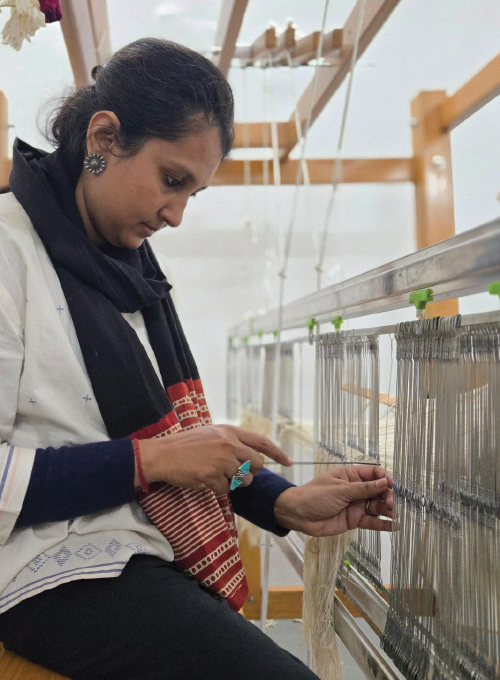
Her creative process starts in two dimensions. “I’ll start the concept using ink and paper, using a pencil to sketch the kind of shape I’m looking for based on my research. And then, slowly and gradually, I move towards the technique, considering what kind of technique will work best with the particular work and what material to use. If I want stiffness in the structure, I pick jute or wool for the warp and the weft. This way, I can get the shape I want.”
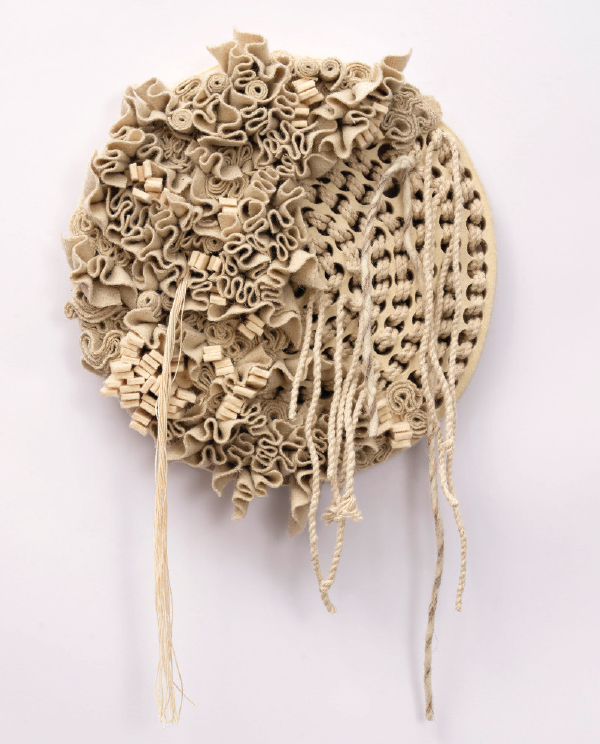
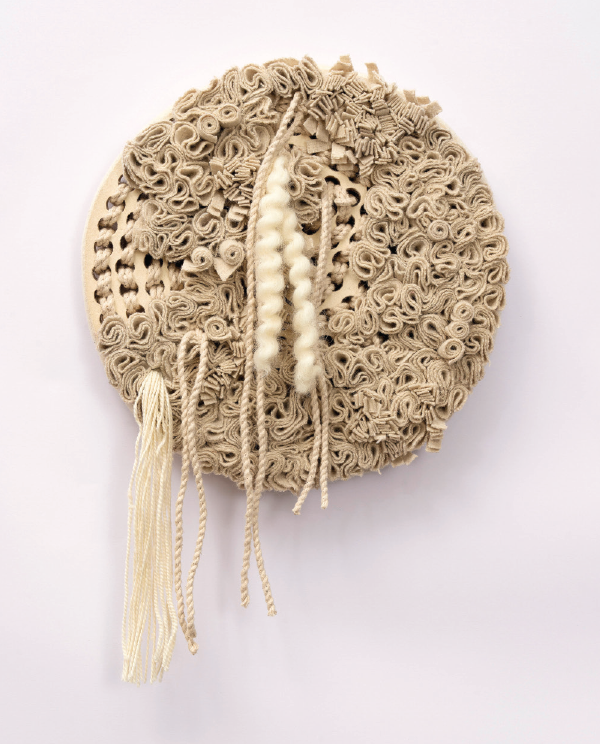
Darshini then moves on to the loom, which she has customized over time to suit her practice and needs. “I wanted a bigger loom, so the big one is seven feet wide, but the mechanism is the same; I wanted it sturdier, so I used teak wood instead of pine or mango wood, and I made the seat deeper because I spend two or three hours at a time working at the loom. The big one has four shafts, and the smaller loom has twelve shafts, which helps me experiment and explore different outcomes.”
The slow, repetitive movements on the loom have helped Darshini grow her practice in textile art. Her expertise with textiles, particularly with handlooms, has allowed her to innovate with varied sizes, shapes, and materials over the past decade. “Earlier, I had a smaller loom, and slowly and gradually I moved towards the bigger one. It’s like mathematics, quite technical, and I learned it from scratch, from thread to fabric,” Darshini shares.
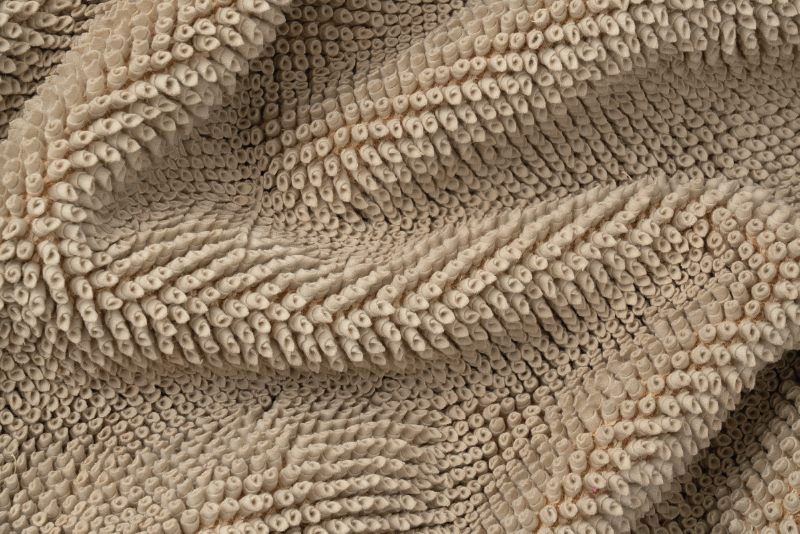
“It is done slowly and gradually, step by step, and
it is very meditative for me,”
Darshini explains.
Darshini’s recent series examines coral formations and the widespread bleaching of coral reefs over time. This concept was deeply explored in her most recent residency. “I documented a lily pond daily—one day it’s crowded with plants and the next day, it changed because the gardener had cleaned it up. So, in one series, I have represented this evolving nature using the textile medium and the loom. My work is deeply rooted in observation.”
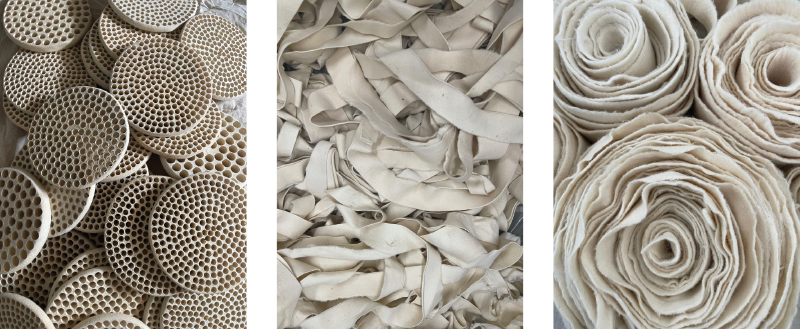
Darshini prefers to use industrial waste in her creations, particularly compressed felt and soft felt from local factories. “This material is great because it doesn’t fray at the edges, there aren’t fibers coming out, and I’m able to cut out different shapes.” Darshini is on the lookout for additional sources of waste, aiming to incorporate organic fibers such as cotton and linen. “When you’re dealing with waste material, there are limitations. You don’t get specific colors. You work with what you get. I’ll introduce the color eventually once I have researched enough, but I won’t use synthetic dye. I’ll only use natural dyes or eco print. But again, my entire concept is evolving nature. So I won’t pluck the flowers and leaves. Whatever has fallen on the ground, I’ll collect it and use it. And then there are onion skins, vegetable waste, and beetroot.”
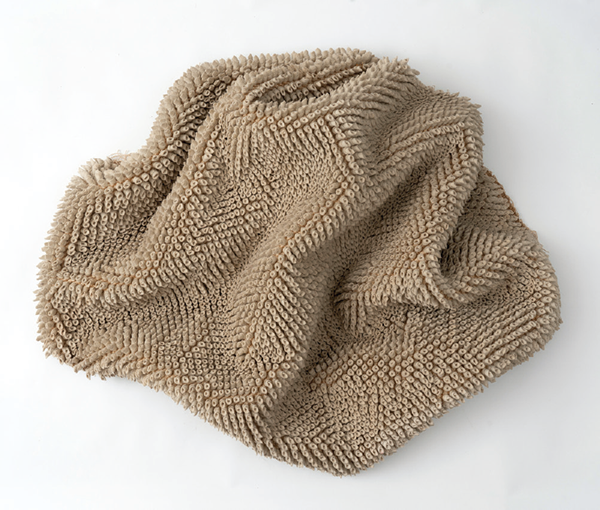
”My work is deeply rooted in observation.”
In keeping with her work, Darshini’s practice is also deeply organic and committed to the creative process. At any given time, she has about two or three works in progress. “Some of it is a repetitive process, and that way it’s very homogeneous, the shape and everything. However, I enjoy the entire process. It’s very meditative. It takes me four or five months to complete something that is, say, 10’ x 6’. Finishing the sides once it’s off the loom also takes time. And then I start crumpling it, shaping it to get the result I’m looking for according to my concept.”
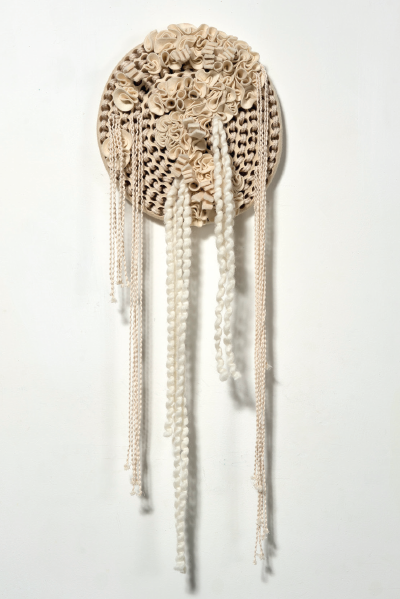
Darshini is working on expanding her practice by researching the incorporation of color, movement, and scale in her new pieces. While she works towards exhibiting her work in shows, she also creates commissions for art lovers and works with international clients to develop textiles for furnishing and commercial use.
You can learn more about Darshini and her work here.
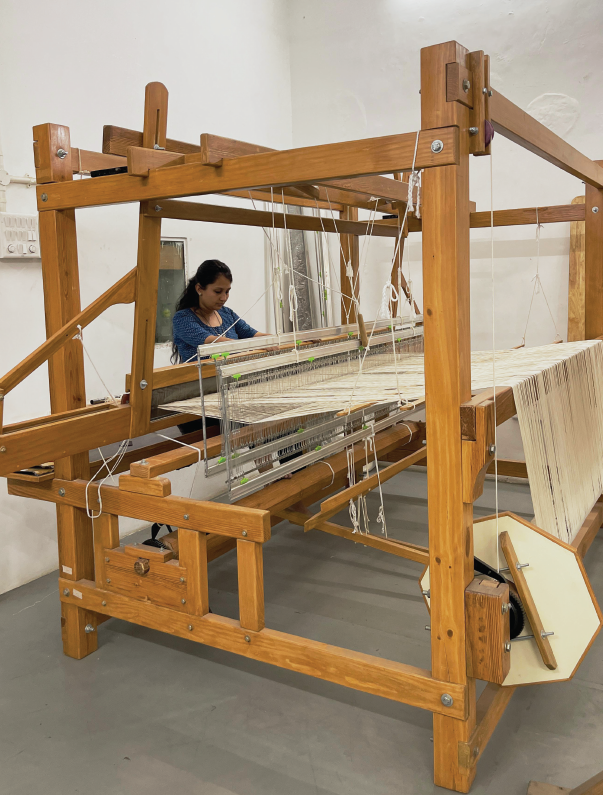

Darshini Patel
Darshini Dalwadi Patel is a textile designer who trained at the National Institute of Design, India. Her passion for observation and documentation, especially of nature, has culminated in a series of tactile and experiential artworks whe... Read More
